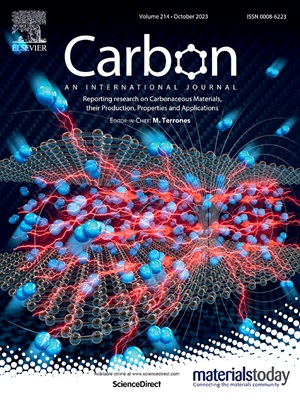uvc光反应器灭菌石墨烯基材料的理化稳定性、微生物污染和内毒素水平的长期研究
IF 11.6
2区 材料科学
Q1 CHEMISTRY, PHYSICAL
引用次数: 0
摘要
在室温(RT)、4°C和- 20°C下,uvc光反应器灭菌的纳米氧化石墨烯(GOn)和部分还原的纳米氧化石墨烯(p-rGOn)在12个月(M)的时间内的稳定性进行了评估。该光反应器用于GBM灭菌,为首次报道。在4°C和- 20°C下储存的GOn和p-rGOn分散体在12 M内保持无菌,相比之下,在RT下储存的两种材料的分散体在12 M后都显示出细菌,真菌和内毒素污染。在所有储存条件下,GOn水分散体在12 M内保持视觉稳定。然而,在室温下保存的p-rGOn的水稳定性在8 M后明显下降,在4°C保存时在12 M后下降,而在- 20°C保存时没有变化。重要的是,储存在- 20°C的材料可以使用浴式超声(30分钟)解冻和再分散,保持其原始特性和无菌性。在整个过程中,两种材料在所有储存条件下都保持了一致的横向尺寸(100-130纳米)和稳定的物理化学特性。本研究首次对无菌GBM稳定性进行了系统的12m评价,为与商业化、运输和生物医学级应用和其他敏感用途的无菌保证相关的长期储存策略提供了有价值的见解。本文章由计算机程序翻译,如有差异,请以英文原文为准。

Long-term study of physicochemical stability, microbial contamination, and endotoxin levels in UVC-photoreactor sterilized graphene-based materials
The stability of UVC-Photoreactor sterilized nanographene oxide (GOn) and partially reduced nanographene oxide (p-rGOn) was evaluated over a 12-month (M) period, when stored at room temperature (RT), 4 °C, and −20 °C. The photoreactor used, was for the first time reported for GBM sterilization. GOn and p-rGOn dispersions stored at 4 °C and −20 °C remained sterile throughout the 12 M. In contrast, dispersions of both materials stored at RT showed bacterial, fungal, and endotoxin contamination after 12 M. GOn water dispersions remained visually stable for 12 M in all storage conditions. However, the water stability of p-rGOn kept at RT was visually decreased after 8 M, when stored at 4 °C it decreased after 12 M, while at −20 °C no changes were observed. Importantly, materials stored at −20 °C could be defrosted and redispersed using bath ultrasonication (30 min), keeping their original properties and sterility. Both materials maintained consistent lateral dimensions (100–130 nm) and stable physicochemical characteristics across all storage conditions for the entire duration. This study presents, for the first time a systematic 12 M evaluation of sterile GBM stability, offering valuable insights into long-term storage strategies relevant for commercialization, transportation, and sterility assurance in biomedical-grade applications and other sensitive uses.
求助全文
通过发布文献求助,成功后即可免费获取论文全文。
去求助
来源期刊

Carbon
工程技术-材料科学:综合
CiteScore
20.80
自引率
7.30%
发文量
0
审稿时长
23 days
期刊介绍:
The journal Carbon is an international multidisciplinary forum for communicating scientific advances in the field of carbon materials. It reports new findings related to the formation, structure, properties, behaviors, and technological applications of carbons. Carbons are a broad class of ordered or disordered solid phases composed primarily of elemental carbon, including but not limited to carbon black, carbon fibers and filaments, carbon nanotubes, diamond and diamond-like carbon, fullerenes, glassy carbon, graphite, graphene, graphene-oxide, porous carbons, pyrolytic carbon, and other sp2 and non-sp2 hybridized carbon systems. Carbon is the companion title to the open access journal Carbon Trends. Relevant application areas for carbon materials include biology and medicine, catalysis, electronic, optoelectronic, spintronic, high-frequency, and photonic devices, energy storage and conversion systems, environmental applications and water treatment, smart materials and systems, and structural and thermal applications.
 求助内容:
求助内容: 应助结果提醒方式:
应助结果提醒方式:


